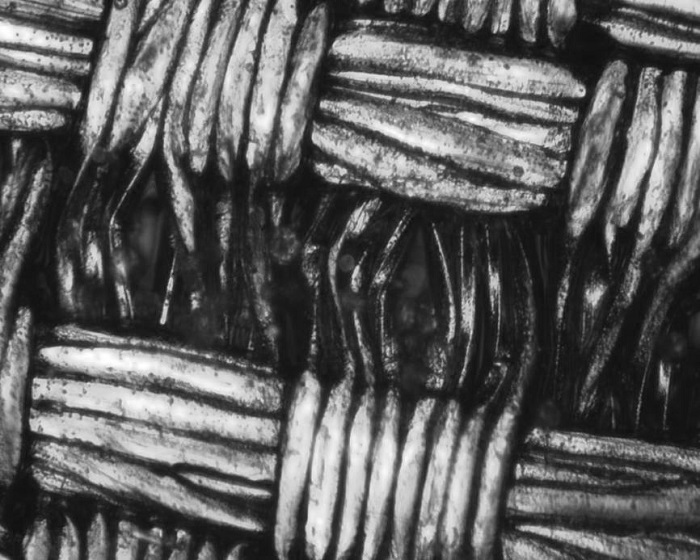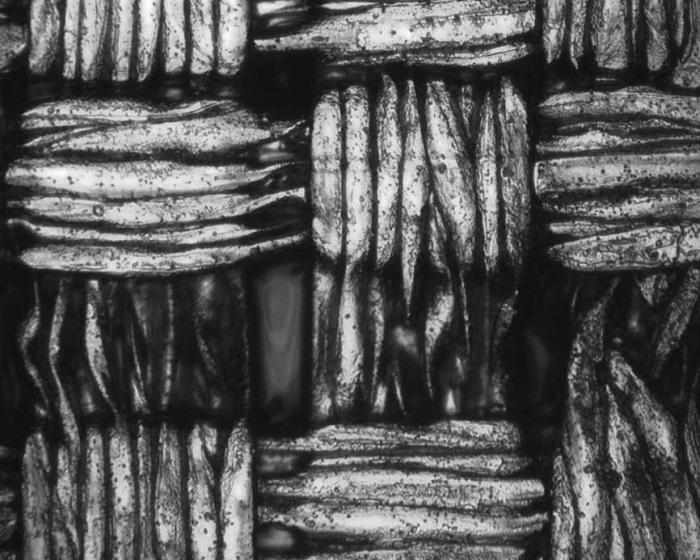Epoxy-modified acrylic resin, preparation method and solvent-type pressure-sensitive adhesive prepared by using the resin
An acrylic resin, pressure-sensitive adhesive technology, applied in the direction of adhesive types, adhesive additives, polymer adhesive additives, etc., can solve the problems of increasing product scrap rate, increasing production costs, etc., and achieve excellent anti-seepage effect, effect of improving weather resistance
- Summary
- Abstract
- Description
- Claims
- Application Information
AI Technical Summary
Problems solved by technology
Method used
Image
Examples
Embodiment 1
[0035] (1) Synthesis of epoxy-modified acrylic resin.
[0036] S1: First use 450g of dipropylene glycol dimethyl ether and 675g of ethyl acetate to dissolve 750g of polyethylene glycol diglycidyl ether epoxy resin to a solid content of 40%, add it to a three-necked flask, and under nitrogen protection, reflux at a constant temperature of 80°C Stir and slowly add 270 g of acrylamide dropwise to prepare epoxy amide resin.
[0037]S2: Add 350g of the above-mentioned epoxy amide resin solution to the three-necked flask, stir at 95°C and reflux the condenser tube, slowly add 30g of isooctyl acrylate, 20g of 2-hydroxypropyl acrylate, 5g of acrylonitrile, 0.8 g BPO initiator mixed solution; after reacting for 1~2H, add 0.2g BPO initiator and keep the temperature for about 2H to obtain epoxy modified acrylic resin solution.
[0038] Weigh the epoxy-modified acrylic resin solution, add ethyl acetate to a solid content of 30%, and add 1% isocyanate curing agent and 0.2% alicyclic amine...
Embodiment 2
[0045] (1) Synthesis of epoxy-modified acrylic resin.
[0046] S1: Dissolve 660g of polyethylene glycol diglycidyl ether epoxy resin in a mixed solvent of 600g of dipropylene glycol dimethyl ether and 940g of ethyl acetate to a solid content of 30%, add it to a three-necked flask, and reflux at a constant temperature of 70°C under nitrogen protection Stir and slowly add 300g of acrylamide dropwise to prepare epoxy amide resin.
[0047] S2: Add the above-mentioned 350g epoxy amide resin solution into the three-necked flask, stir at 85°C and reflux the condenser tube, slowly add 15g of isooctyl acrylate, 20g of 2-hydroxypropyl acrylate, 5g of acrylonitrile, 0.5 g BPO initiator mixed solution; after reacting for 1-2H, add 0.3g of BPO initiator and keep the temperature for about 2H to obtain epoxy-modified acrylic resin.
[0048] (2) Preparation of solvent-based conductive adhesive.
[0049] S1: Weigh 10 kg of ethyl acetate in parts by weight in a clean and normally operating in...
Embodiment 3
[0054] (1) Synthesis of epoxy-modified acrylic resin.
[0055] S1: First use 450g dipropylene glycol dimethyl ether, 675g ethyl acetate mixed solvent to dissolve 625g polyethylene glycol diglycidyl ether epoxy resin to a solid content of 40%, add it to a three-necked flask, under nitrogen protection, reflux at a constant temperature of 75°C Stir and slowly add 320 g of acrylamide dropwise to prepare epoxy amide resin.
[0056] S2: Add the above-mentioned 350g epoxy amide resin solution into the three-necked flask, stir at 90°C and reflux the condenser tube, slowly add 20g of isooctyl acrylate, 20g of 2-hydroxypropyl acrylate, 5g of acrylonitrile, 0.6 g BPO initiator mixed solution; after reacting for 1-2H, add 0.3g of BPO initiator and keep the temperature for about 2H to obtain epoxy-modified acrylic resin.
[0057] (2) Preparation of solvent-based acrylic flame-retardant adhesive.
[0058] S1: Weigh 10 kg of ethyl acetate in parts by weight in a clean and normally operatin...
PUM
| Property | Measurement | Unit |
|---|---|---|
| epoxy value | aaaaa | aaaaa |
Abstract
Description
Claims
Application Information
 Login to View More
Login to View More - R&D
- Intellectual Property
- Life Sciences
- Materials
- Tech Scout
- Unparalleled Data Quality
- Higher Quality Content
- 60% Fewer Hallucinations
Browse by: Latest US Patents, China's latest patents, Technical Efficacy Thesaurus, Application Domain, Technology Topic, Popular Technical Reports.
© 2025 PatSnap. All rights reserved.Legal|Privacy policy|Modern Slavery Act Transparency Statement|Sitemap|About US| Contact US: help@patsnap.com



